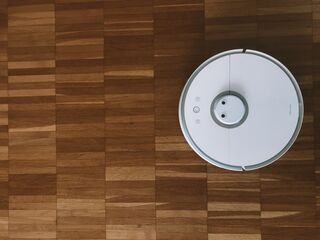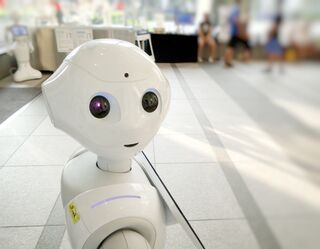Loneliness
The Psychology Behind Our Attachment to Robots
Part 4: Why some people become closely bonded to robots and inaminate objects
Posted December 9, 2021 Reviewed by Vanessa Lancaster
Key points
- The rise in loneliness provides a new form of consumer demand which businesses have begun to capitalize on.
- Loneliness doesn’t just increase the drive for human connection but fundamentally alters the way people connect.
- Crucially for the loneliness economy, loneliness makes inanimate objects seem human-like and sentient.
If Benjamin Button taught us anything, it's that infants and older adults are more similar than they are different. Toward the end of our lives, we return to the same state as we started: slow, irritable, with a tendency towards soft foods.

In the context of the loneliness economy, we can add another similarity to the list: both become easily attached to toy animals.
Consider Paro, the cute, furry robotic seal that can reach to touch and learn to respond to its name. You could easily imagine an infant child fawning for one and it quickly becoming a best friend–like a sentimental teddy bear, but supercharged.
Indeed, one of the largest target markets for loneliness innovations is older adults, who sadly have some of the highest isolation rates. Human visitors to elderly care facilities can be few and far between, so the synthetic has been picking up the extra slack.
However, as we’ll see, the older demographic is just the tip of the iceberg. Increasingly, people of all ages are developing relationships with robots.
How Loneliness Impacts the Attachment to Robots
The rise in loneliness provides a new form of consumer psychology which businesses have begun to capitalize on. These innovations are aided by the fact that loneliness doesn’t just increase the drive for human connection but fundamentally alters the way we connect.

Crucially for the loneliness economy, loneliness makes inanimate objects seem human-like and sentient. Lonely people are more likely to see robotic helpers such as Roombas as having more of a mind of their own. These innovations, however, weren’t built as a cure for loneliness. They were built for very different functions and merely, as a testament to the power of loneliness, become objects of deep affection and companionship.
More and more, however, innovations are designed for loneliness from their very inception. While many, like Paro, are about providing companionship, others take a sharp turn for the romantic, providing synthetic love. How is the loneliness economy being served by these innovations? Let’s meet some of these companions, starting first with the companions.
The Psychology of Companion Robots
Paro, the fluffy seal, is hard to beat as far as robotic companions go. Created by Takanori Shibata in 2005, the lifelike seal has been a hit. The research on Paro suggests that it provides similar benefits to comfort pets: reduced anxiety, depression, and a feeling of nonjudgmental companionship. A Paro goes for about $6,000, but they’re growing in popularity despite the price tag. They are used in over 30 countries, including 3,000 elderly customers in Japan alone.
However, Paro is facing some stiff competition within a growing industry. The social robots market is booming. In 2017, it was estimated at $275 million and was expected to grow to $1.4B by 2025. Others include the Joy for All robotic dog, which has built-in sensors that respond to motion and touch and can learn human voices. There’s also Sony's Aibo which can learn tricks, memorize phrases, and adapt its personality to its human owners.

The fullest expression of robot companions mimics the human form: Synthetic humanoids. The mental modeling process need not strain to assign a human-looking robot a human-like mind.
One of the most popular humanoid robots is Pepper. They stand about four feet tall and have some impressive human-like capabilities. They can dance, make jokes, engage in small talk, and walk around a cluttered room independently. Perhaps most strikingly, Pepper uses advanced facial recognition technology to identify basic human emotions and adjusts appropriately. For example, if it thinks you’re sad, it might ask, “what’s wrong?” or offer to tell a joke to cheer you up.
Due to its relatively high social intelligence, Pepper has primarily been employed in a hospitality context. It was first rolled out in Belgian hospitals as receptionists in 2016 and has been used in retail stores throughout Japan to welcome customers.
All in all, these technologies are only becoming more sophisticated and more integrated into everyday life. So what happens when lonely people, deprived of human contact, spend excessive time with helpful robots and synthetic humans? You guessed it: Things get romantic. In the final piece in this series, we explore the psychology of synthetic love.
This is part 4 of a multi-part series on the consumer behavior and loneliness. Part 1 examines the Psychology and Business of Loneliness, while Part 2 explores The Rising Loneliness Economy. Part 3 looks at the unexpected ways loneliness impacts our social lives, specifically the Psychology of Parasocial Relationships.
This post also appears on the consumer psychology blog NeuroScience Of
References
Holt-Lunstad, J. (2021). Loneliness and Social Isolation as Risk Factors: The Power of Social Connection in Prevention. American Journal of Lifestyle Medicine, 15598276211009454.
Nass, C., Moon, Y., Fogg, B., Reeves, B., & Dryer, C. (1995). Can computer personalities be human personalities? International Journal of Human-Computer Studies, 43, 223–239.
Nass, C., Moon, Y., & Carney, P. (1999). Are people polite to computers? Responses to computer-based interviewing systems. Journal of Applied Social Psychology, 29(5), 1093–1110.
Topping, A. (2014) “One in 10 Do Not Have a Close Friend and Even More Feel Unloved, Survey Finds,” The Guardian
“Value of Social and Entertainment Robot Market Worldwide from 2015 to 2025 (in Billion U.S. Dollars),” Statista, May 2019
Prakash, A. (2018) “China Robot Market Likely to Continue Rising, Despite Trade Disputes,” Robotics Business Review, July 2018, roboticsbusinessreview.com/regional/china-robot-market-still-rising/




